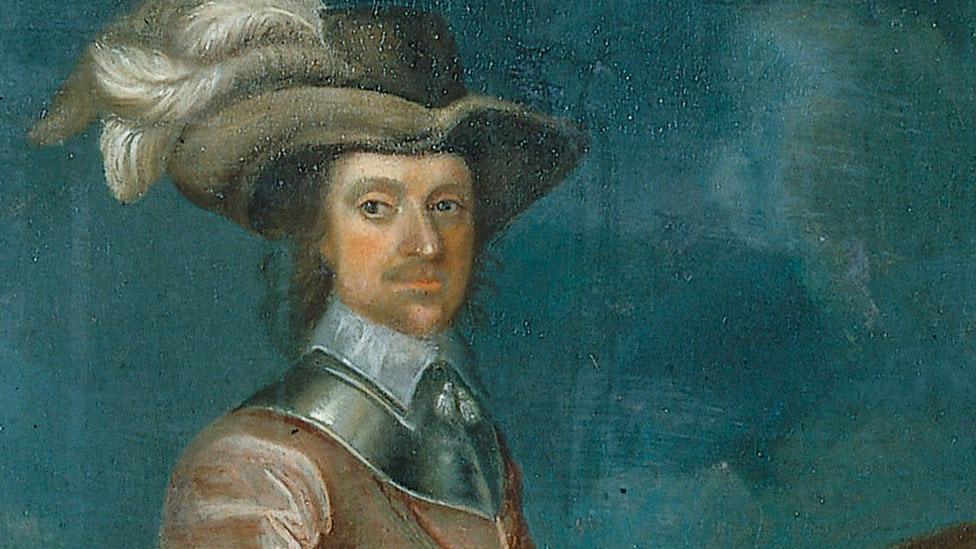Did Cromwell see Mary Queen of Scots' coffin?
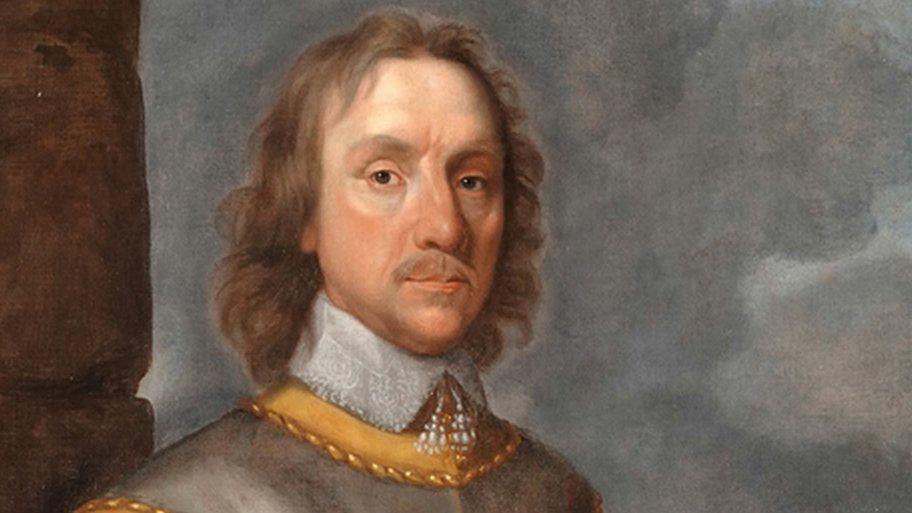
Oliver Cromwell was born, educated and spent half his life in Huntingdon and he had his first brief foray into politics in the town
- Published
An exhibition about Oliver Cromwell's home town has raised the possibility he must have seen Mary, Queen of Scots' coffin as a school boy.
The Parliamentarian Civil War leader spent his early years in Huntingdon, in present-day Cambridgeshire, and the exhibition focuses on the town during his life time.
A parish register records the queen's coffin resting overnight in a church close to Cromwell's school in 1612, on its journey from Peterborough Cathedral to Westminster Abbey for reburial.
Cromwell Museum curator Stuart Orme said: "It is interesting to ask, did he see the coffin of a headless Stuart monarch and did it stick in his mind as precedent for the future?"
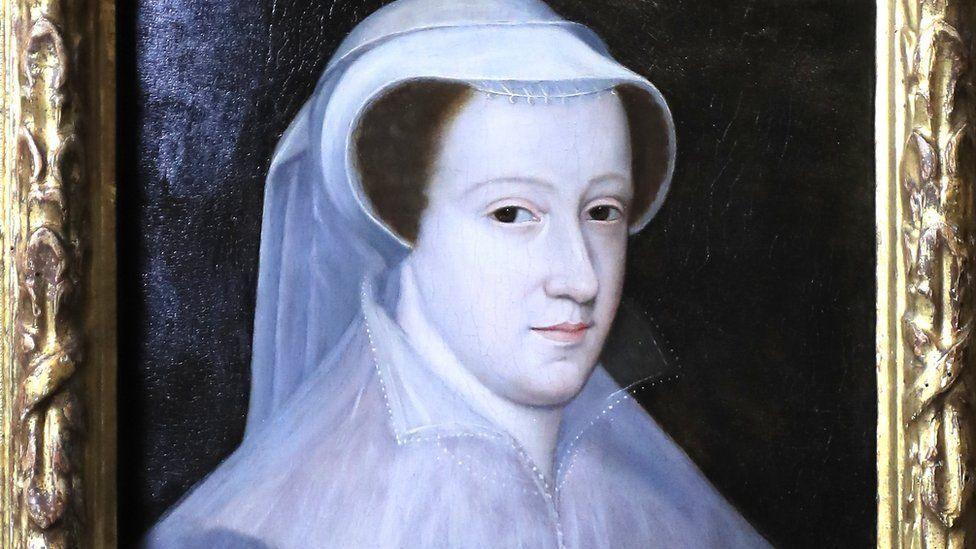
Mary fled to England after she was forced to abdicate in 1567 and after years of captivity and plots by Catholics to overthrow Elizabeth I, she was executed
The Scottish queen was executed at Fotheringhay Castle, external, Northamptonshire, in 1587 and buried at Peterborough Cathedral.
Her son, James VI of Scotland and I of England, ordered her body's reburial at Westminster Abbey, nine years after he inherited the English throne.
Mr Orme said: "We know it was a four day journey between Peterborough and London and we know it definitely stopped at All Saints' Church on the town square because the register says, 'The Queen of Scots corpse was brought into this church on 6 October'.
The church is just across the road from the grammar school where a 13-year-old Cromwell was a pupil. It now houses the Cromwell Museum.
"It is unlikely that he would not have seen the funeral cortege and coffin go into the church - it would have gone past his house, his school and would have been a big thing for the town," said Mr Orme.
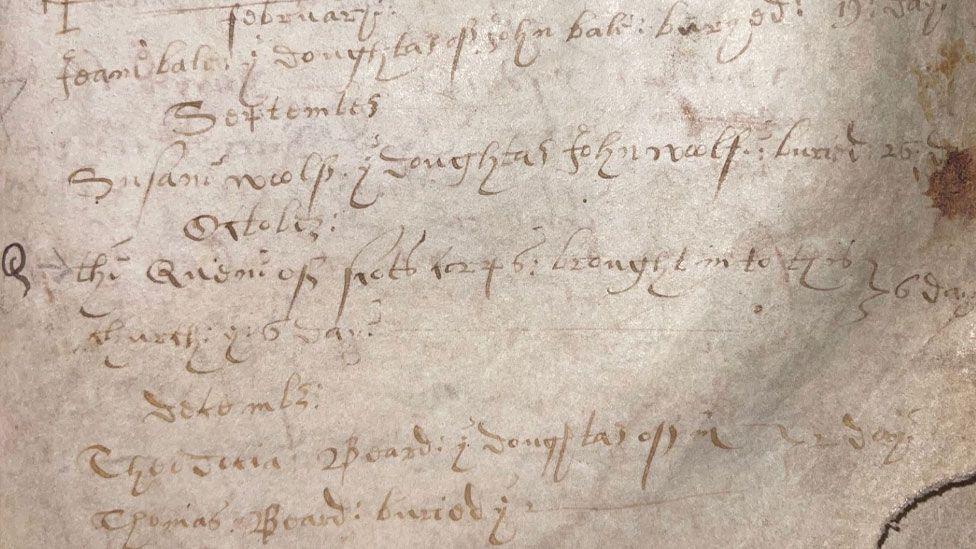
The coffin rested in Huntingdon on its way to London to be re-interred beneath a lavish monument across the aisle from Elizabeth I's memorial
Who was Oliver Cromwell?
Oliver Cromwell rose to prominence in the Civil Wars and played a major role in the trial and execution of Charles I
He was vilified for the campaign in Ireland in 1649, but the accusation there were massacres of civilians is unproven, external
He was the first commoner to become head of state in British history
As Lord Protector he permitted religious tolerance - although not for Catholics
He died peacefully in his bed at Whitehall in 1658
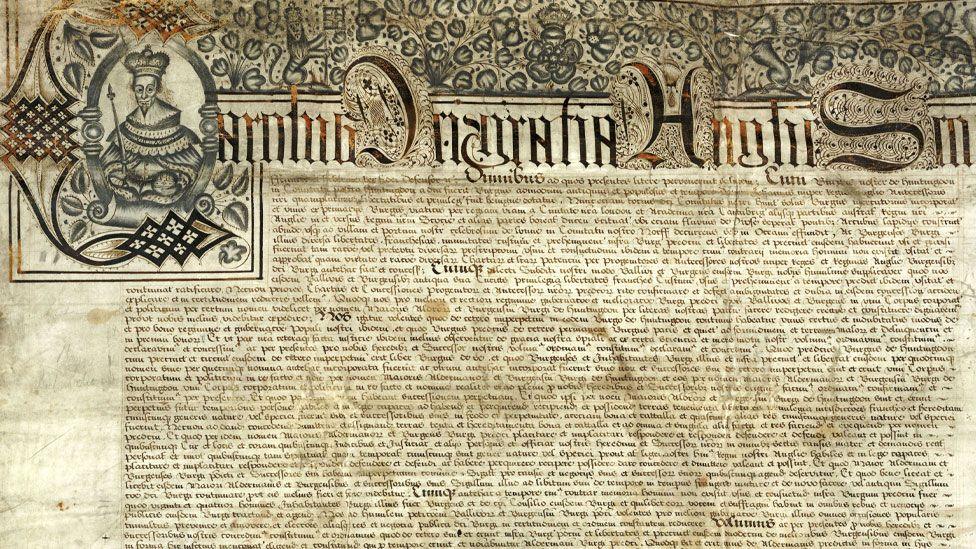
Cromwell's fortunes declined during his years in Huntingdon and after he opposed the town charter, he left to become a tenant farmer in St Ives
A copy of the page from the parish register is on display, alongside rarely seen items including the town charter for Huntingdon, given by Charles I in 1630.
This appointed its mayor and alderman for life and precipitated Cromwell's departure from the town.
Mr Orme said: "He was quite voluble on the subject and quite intemperate in his language, which led to him being publicly censored and locked up for a few days.
"He was then made to issue a rather humiliating apology in market square and this was one of things that led him to up sticks and move down the road to St Ives."
Another of the highlights is a map of the town, drawn up in 1610 by John Speed.
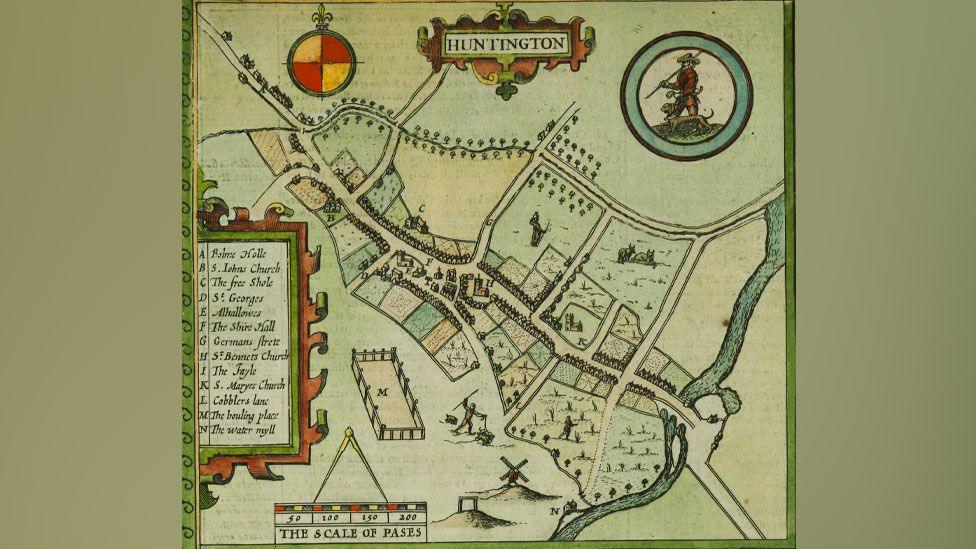
John Speed's Huntingdon map highlights its churches and the George coaching inn, popular with travellers on the Great North Road between London and York
The town retains some buildings familiar to Cromwell, such as the Falcon pub and St John's Church, where many of his children were baptised.
"He's born, educated and spent half his life here and had his first brief taste of politics," said Mr Orme.
"Even when he moved away, it was where he returned in 1642 to raise his first troop to fight for Parliament.
"Aside from Westminster and the battlefield, Huntingdon was the place that most made Oliver Cromwell."
Cromwell's Huntingdon, external runs until 29 September.

All Saints' Church is just across the road from Oliver Cromwell's school, the medieval building on the right
Follow East of England news on Facebook, external, Instagram, external and X, external. Got a story? Email eastofenglandnews@bbc.co.uk, external or WhatsApp us on 0800 169 1830
Related topics
- Published16 April 2024
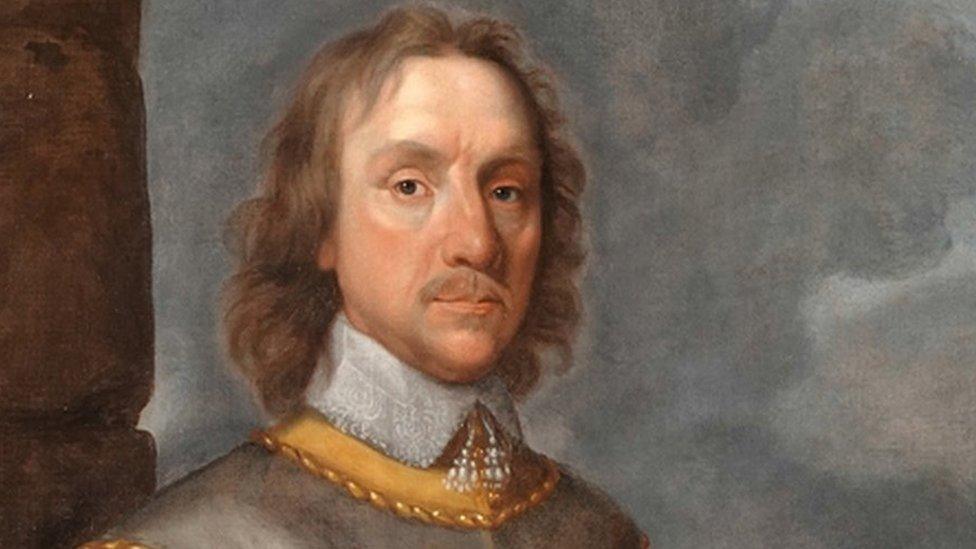
- Published27 November 2023
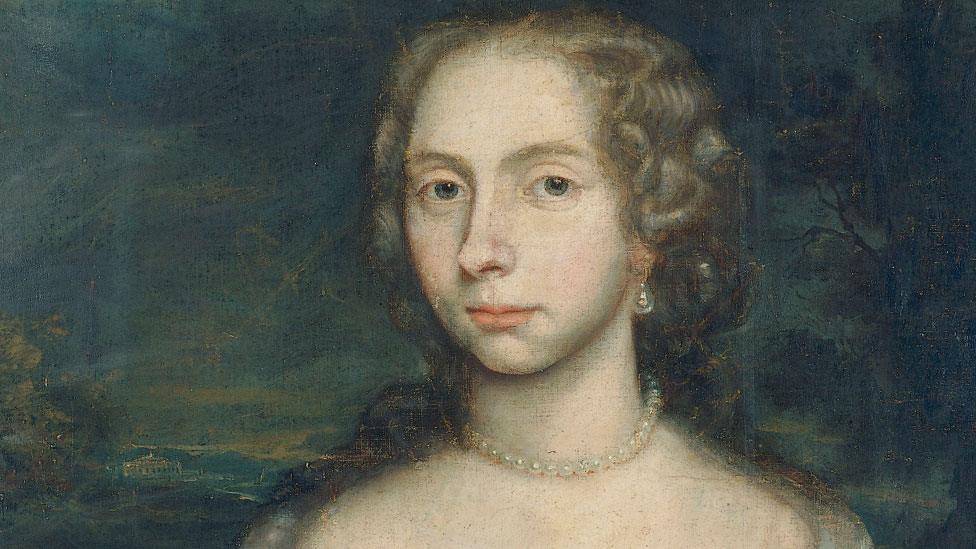
- Published23 September 2023
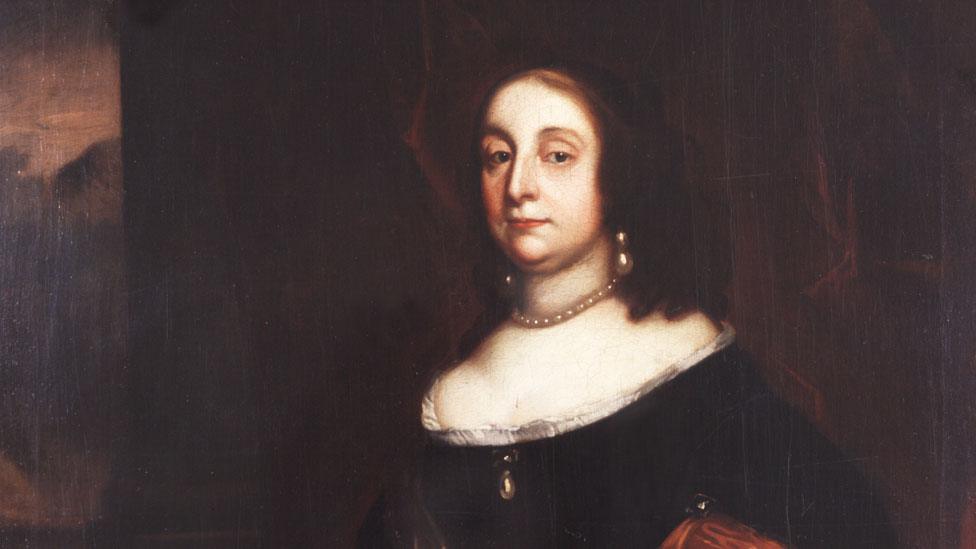
- Published20 May 2023
